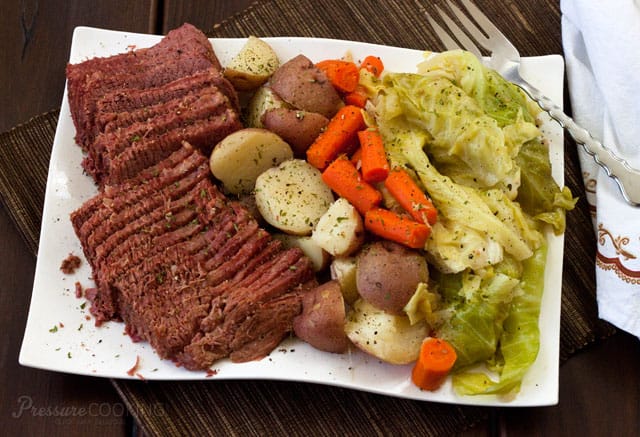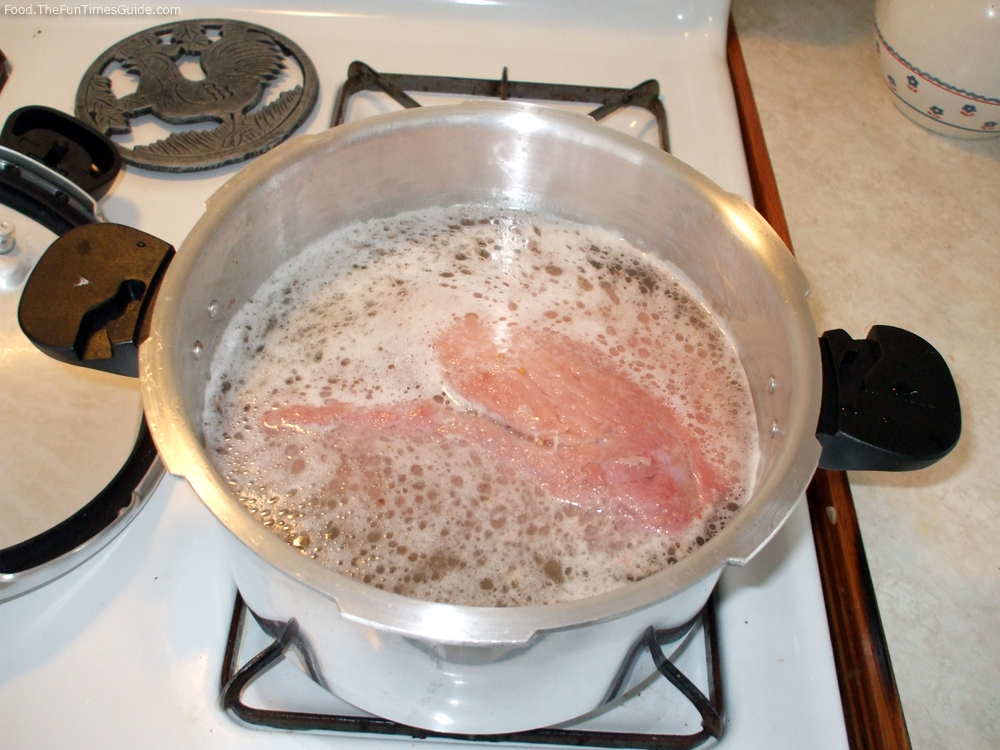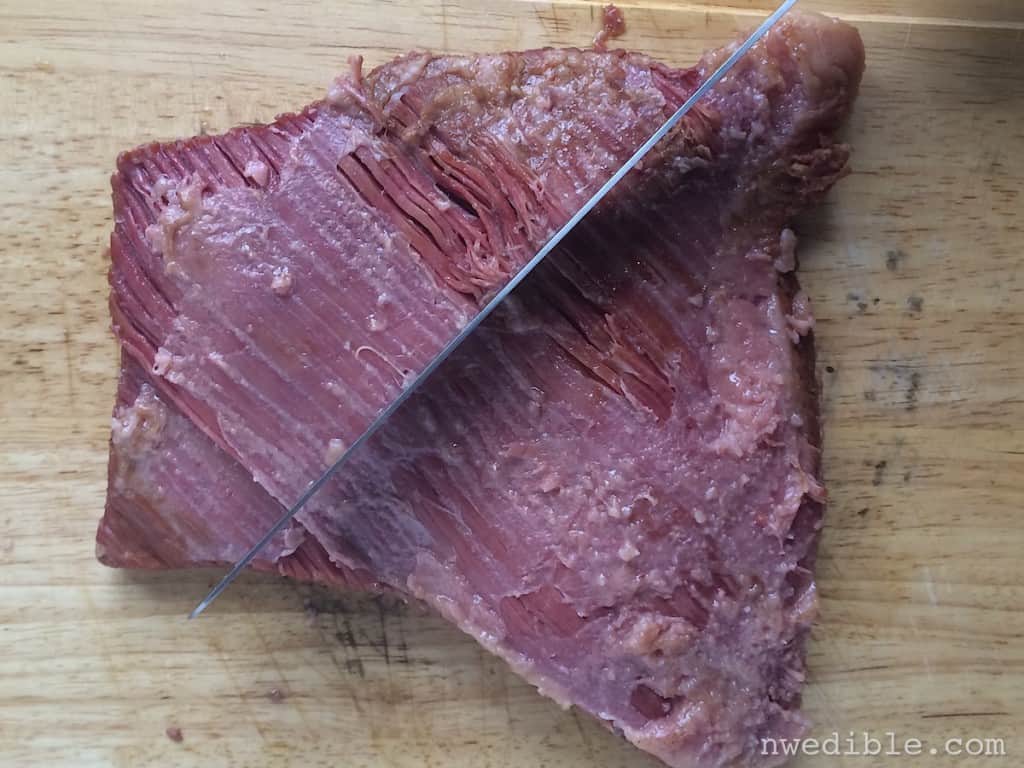Tips for PERFECT Corned Beef!

March, the month for St. Patrick’s Day—let the celebrations and parades begin! And the logical accompaniment to all the festivity? The iconic Irish-American classic, corned beef and cabbage. This meal has become a delicious way to celebrate all things Irish.
However, it’s not all that easy to achieve the PERFECT corned beef dish. The good news is, there’s plenty of expert help available (thank you Internet). While this dish takes a little courage to attempt, first time around, making corned beef at home is a satisfying cooking project.

So whether you’re making corned beef for the first time, or are an old pro simply curious about how others do it, take a look at this list of the things TO DOs. It’ll help you turn out the PERFECT corned beef. (This very helpful tutorial comes from the pros at Kitchen, www.thekitchn.com):
RINSE THE MEAT BEFORE COOKING. If you cook the meat straight from the plastic packaging or pulled from the brine solution in the fridge, you’ll end up with a saltier meal than you wanted.
Whether you bought a ready-to-cook corned beef or you cured your own, rinse the meat several times under cool water to remove any excess salt. Don’t worry about rinsing away all the flavor; by this point, the meat is fully infused with it.
COOK OVER LOW HEAT. High heat is not a friend to brisket. When cooked at a boil for too long, corned beef turns out tough and chewy, rather than soft and tender.
So whatever cooking method you use, cook your corned beef over low heat. A low, gentle simmer on the stovetop or in the slow cooker are two methods for cooking up soft, tender slices of corned beef every time.

TOTALLY SUBMERGE THE BEEF. Simmering corned beef on the stovetop is a tried-and-true method that, when done right, results in very tender beef. BUT, be sure you use enough water. From start to finish, when there’s not ample liquid to cover the meat, your dreams of tender corned beef will turn into a tough, chewy nightmare.
Be sure to fill your stockpot or slow cooker with enough water so the beef is totally submerged. Remove the lid to check the level of liquid during cooking and add more water, if necessary. This small step ensures a super-tender corned beef.
GIVE IT ALL THE TIME IT TAKES. Brisket, the cut typically used for corned beef, is a naturally tough cut of meat. Cooking this beef just can’t be rushed. Even when the meat is cooked through, it needs more time to transform the chewy bite into one that’s deliciously tender.
The bottom line: Cooking corned beef takes patience. This tough always benefits from a lengthy cook time. For stovetop cooking, plan on at least three hours for a three-pound corned beef. In the slow cooker plan on 8 to 10 hours for a three- to four-pound cut.

CUT IT CORRECTLY. The way you slice your cooked corned beef actually makes a big difference. Slicing meat with the grain (or in the same direction as the muscle fibers) should always be avoided, as it leaves you with a chewier piece of meat.
Instead, treat corned beef like steak. Look for the lines of visible muscles fibers on the meat — this is the “grain” of the meat. Always sliced corned beef against the grain (rather than with it). Cutting through the muscle fibers shortens them, making each piece easier to chew.
I’ll close with a recipe that you can use to try out the above techniques. It’s from Genius Kitchen (www.geniuskitchen.com), and has received 146 Five Star reviews. This recipe takes at least 3 hours to prepare and cook (which according to all the recipes I reviewed, is typical).
N.Y.C. CORNED BEEF AND CABBAGE
1 (2 -6 pound) corned beef brisket
1 teaspoon peppercorns
2 dried bay leaves
1 head fresh cabbage
12 medium- to small-sized red potatoes
2 large fresh carrots
1 medium onion
1 clove garlic
Fresh parsley (dried won't do at all)
Butter
Yellow mustard (for serving)
1 loaf rye bread (traditional) or 1 loaf Irish soda bread (for serving)
SELECTING CORNED BEEF: Do this several days ahead of time or you’ll have to pick out the best of what has been picked over again and again. The best disappear quickly. You want a thick slab with very little gristle. There will always be some gristle and it runs the length of the slab in the center. The thicker the slab the better. If you are lucky, you may see some chunk style at a higher price per pound. If there isn't a spice bag included, you’ll need to get some whole peppercorns (white and black) and bay leaves. Do not freeze this once you get it home.
SELECTING THE CABBAGE: The heavier and more solid, the better it is. Keep in mind that the outer leaves will be discarded even if the store has already removed the natural outer leaves to make them look better and fresher.
SELECTING THE POTATOES: Avoid potatoes that have been dyed. You want medium to small potatoes. Actually, the smaller the better. Those as small as salad tomatoes are best.
PREPARING AND COOKING
Place brisket in large Dutch oven or stock pot, best side up.
Add the spice packet OR a teaspoonful of peppercorns and two bay leaves.
Cover the brisket generously with water and a bottle of beer (optional - adds flavor and is a tenderizer).
Bring to a boil.
Reduce heat to simmer; cover and cook 2 hours.
As brisket is cooking:
Scrub and rinse potatoes, removing eyes and any bad spots; leave as much peel as possible; quarter potatoes (or halve or leave whole if tiny); cover with water until ready to use.
Remove outer leaves from cabbage until the leaves are entirely light green; rinse and cut cabbage into quarters (through the spine so quarters remain intact); set aside.
Peel carrot; cut it into quarters; set aside.
Peel onion; cut it into eighths; set aside.
Rinse parsley; chop up just the tops into very tiny pieces (kitchen shears work well for this).
AFTER 2 HOURS:
Place potatoes atop the brisket.
Add water to cover meat and potatoes; bring to a boil.
Reduce heat, cover and simmer for 10 minutes.
Layer cabbage on top of the potatoes; place onion and carrots on top of the cabbage.
Add more water to cover everything; bring to a boil.
Reduce heat, cover and simmer for 20 minutes.
At end of 20 minutes, check cabbage to see if it is tender; add another 5 minutes if needed (but be sure not to over-cook it).
Prepare a large serving bowl by crushing garlic clove and thoroughly rubbing the inside of the bowl with it.
Place cooked vegetables in the bowl while still piping hot and add (at least) a quarter pound of butter and add a handful (more is better than less) of chopped fresh parsley.
Gently stir until butter is melted, it coats all the vegetables, and the parsley is evenly distributed. (Put remaining parsley into a tiny serving bowl for those who want to add more to their potatoes.)
Slice the brisket cross grain and serve with vegetables, mustard, and sliced rye or Irish soda bread.
- www.myirelandtour.com
- www.pressurecookingtoday.com
- www.food.thefuntimesguide.com
- www.nwedible.com
 Alice Osborne
Alice Osborne
Weekly Newsletter Contributor since 2006
Email the author! alice@dvo.com
